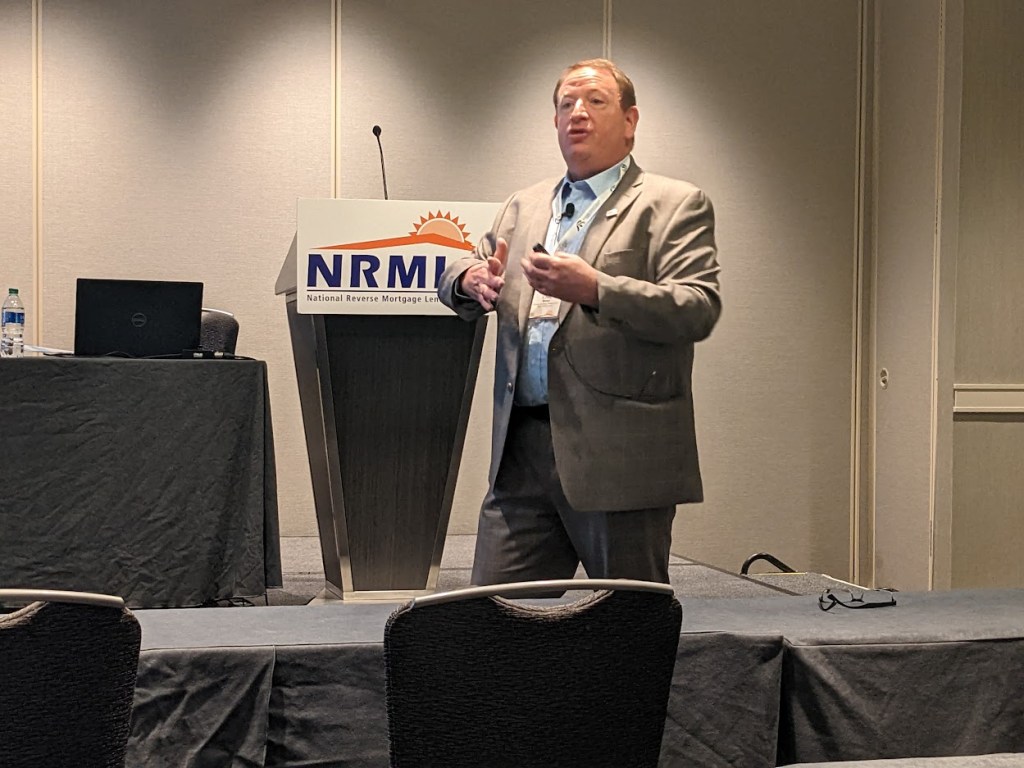Reverse mortgage professionals who are focused on client conversations to generate business in a tough market may benefit from using certain product facts to orient the conversations — whether the discussion is about making a loan work or improving a borrower’s situation with a reverse mortgage.
In particular, facts regarding client or spouse’s birthdays, how interest rates work for reverse mortgages or how to apply the best rate can be applied, according to a recent National Reverse Mortgage Lenders Association (NRMLA) presentation from reverse mortgage industry educator Craig Barnes.
The birthday rule
Reverse mortgages are designed for seniors who want to tap into their home equity. The Home Equity Conversion Mortgage (HECM) program has a minimum age requirement of 62, while certain private-label products have age limits as low as 55 in some states. Generally speaking, the older a borrower is when the loan closes, the higher the loan proceeds can be.
But for professionals talking to borrowers on the fence about reverse mortgages, one factor that could make a difference is the borrower’s birthday, Barnes said.

“We talk a lot about it; we call it the birthday rule,” Barnes said. “And it means that the borrower can get more money if their birthday is within six months of the closing of their HECM. And I say HECM, but if you’re talking about proprietary, I believe most [or] all of the folks in the industry do the birthday rule for all the proprietaries as well.”
The birthday rule can also make a difference in the closing process if the rule is observed, Barnes said.
“It’s also important sometimes where it might be the difference between the borrower bringing money to closing or not,” he said. “I’ve seen several scenarios over the years where if we just wait[ed] a week or two, it might mean the difference between the borrower having to bring a couple thousand dollars to the table or not.”
In some cases, borrowers are unable to wait, or had their birthday recently, which makes it a non-issue. But in certain situations, the birthday rule could have an impact, Barnes said.
“When you have that borrower on the cusp [of moving forward], it may make a difference,” he said. “So it’s important to keep an eye on that and see if that birthday is happening soon. It might help.”
Principal limit lock
The principal limit of a reverse mortgage determines the loan proceed amount that a borrower can receive. Principal limit factors (PLFs) determine the percentage of a home’s value a borrower can receive based on their age and expected rate, and the timing of an application can make a difference in the amount due to the principal limit lock.
“Most of the industry still does [principal limit lock by] looking at a window of 120 days from case number assignment,” Barnes said. “There is a window, which means that the case number gets assigned after application. We take the expected interest rate that was in effect when the application was taken, and then — usually within a couple of days — the case number gets assigned. That’s when the clock starts ticking.”
As long as a HECM closes within 120 days of the case number assignment, the borrower will be given the rate from the time of application to expected closing that offers the most money.
“Remember, we’re talking about weeks, Tuesday through Monday,” Barnes said. “That rate is effective the entire week of closing and of application. We look at the week the borrower applied, we look at the week the borrower closed or is closing, and we compare those two rates. Whichever one gives the borrower the best and the most money, that’s what they get, as long as the loan closes within 120 days. If the loan is outside of that window, all bets are off, and they get the rate at closing.”
Because of general rate volatility, it may be important for reverse mortgage loan originators to keep the principal limit lock in mind when working with a client.
“Principal limit lock is really, really important, especially when we’re in that rising rate environment that we see today,” Barnes said. “We see rates are pretty volatile. That’s when principal limit lock is really important.”



